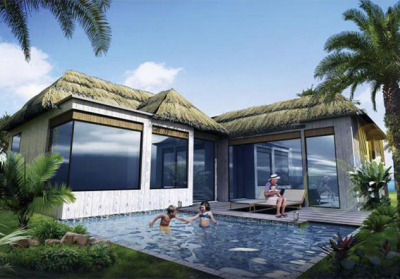With economic growth and the promotion of rural revitalization strategies, many rural areas have begun building their own villas, creating unique homes. Along with the popularity of prefabricated construction, some people choose prefabricated houses when building villas. What are the key design points for building prefabricated houses? What are the advantages and disadvantages of prefabricated decoration? Let’s take a look.
I. Key Design Points for Prefabricated Houses
1. Plan Water and Electrical Systems in Advance. Water and electricity must be designed beforehand to meet basic living needs. Safety and practicality come first, followed by aesthetics. The general principle is to avoid modifying water and electrical systems unless necessary, keep wiring concealed whenever possible, and solve drainage issues in advance. To save costs without compromising quality, use good-quality faucets, bulbs, and electrical materials—cutting corners here only causes future problems.
2. Clear Functional Zoning and Reasonable Space Layout. Maximize space utilization while ensuring convenience. For example, living rooms and foyers should be spacious but not empty, with an emphasis on decoration and usability. Improve continuity between stairs and ceilings and enhance comfort in living rooms, lounges, and activity rooms. Decoration should be simple and smooth, combining beauty with function. Furniture should be comfortable and visually appealing.
3. Consider Adequate Natural Lighting. When building, pay attention to room transparency. Sunlight has sterilizing, disinfecting, and deodorizing effects. However, some replace clear glass with tinted glass to pursue style and luxury. Clear glass transmits about 50% of sunlight, while tinted glass transmits only 26%, and window screens reduce it further. This reduces sunlight benefits and negatively impacts health. Good natural light also promotes a positive and happy atmosphere.

4. Consider Overall Style and Highlight Matching. Determine the main style first, such as mixing “square” and “round,” or combining “soft” and “hard,” “classical” and “modern” for a harmonious contrast. Use ceiling designs to create uniqueness—like curved staircases paired with conical ceiling shapes to enhance spatial dynamism. The design lines should be smooth and meet lifestyle needs, balancing distinctiveness with practicality.
5. Consider Residents’ Characteristics. The number and preferences of occupants influence design. For example, consider the elderly’s preferred color tones and convenience needs, and design suitable spaces for children. Most importantly, design and implementation should align with the owner’s tastes and requirements.
II. Advantages and Disadvantages of Prefabricated House Decoration
1. No Masonry or Painting Work; Less Construction Waste. Prefabricated decoration uses dry construction methods, avoiding wet processes. Floor and wall tiles are installed dry, improving efficiency and reducing dust pollution, greatly enhancing environmental performance. Dry construction also preserves the original structure’s stability and safety.
2. Short Construction Period; Easy Renovation of Walls, Ceilings, and Floors. Prefabricated construction can complete the foundation layer in 7 days, and storage and soft furnishing installation in 3 days. If the homeowner’s needs or tastes change, ceilings, walls, and overall space styles can be quickly replaced. For example, a single accent wall can be changed in 3 hours, and a bedroom’s function can be remodeled in 10 hours.
3. Professional Design; Aesthetic, Scientific, and Practical. Professional design and matching ensure a cohesive effect, improve usable space and flow, and optimize interior layouts. High integration improves comfort, with a large inventory of standardized materials and products. Users can freely choose styles and products according to their preferences.
4. Disadvantages of Prefabricated Decoration. This modular decoration approach has some inevitable drawbacks. To control costs and ensure industrialization, differentiation is discouraged. Styles tend to be somewhat uniform, which is less suitable for high-end custom designs and small apartments.
Article content sourced from the internet. If there are any concerns, please contact us for removal!
Leave a Reply